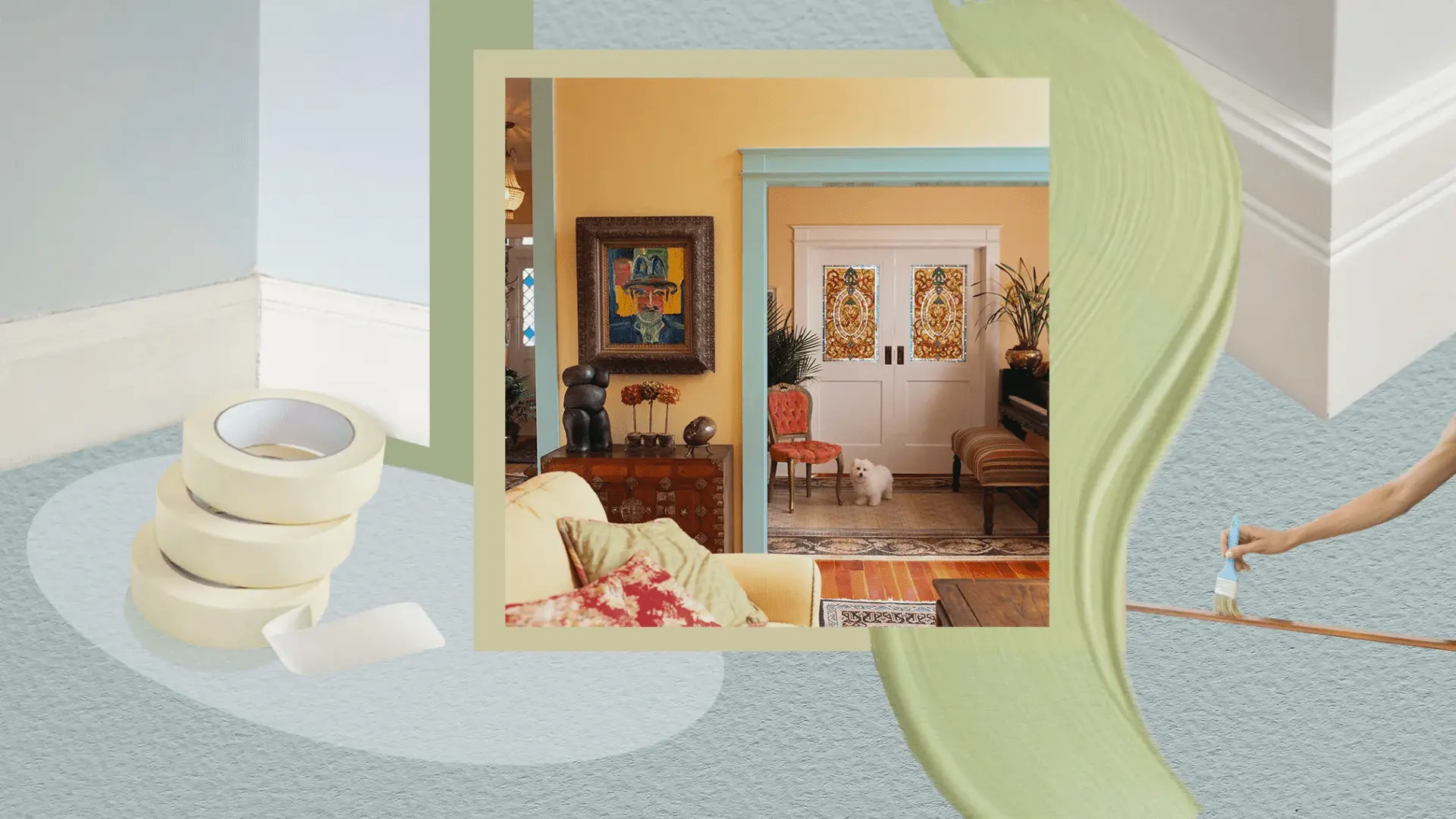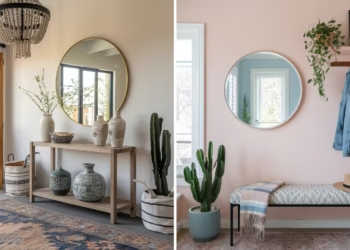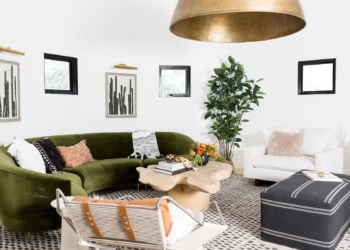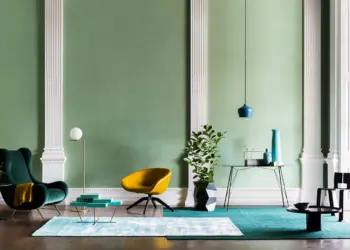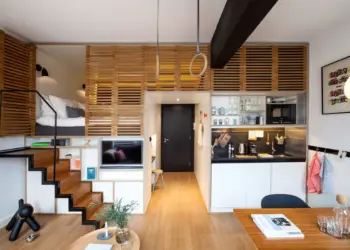Choosing the right trim colors for your interior can be a daunting task. The color of your trim can significantly impact the overall look and feel of a room. From classic whites to bold contrasts, the options are vast, and finding the perfect balance requires careful consideration. Let’s dive into the art of choosing trim colors that elevate your home’s interior design.
Table of Contents
Understanding the Basics
Trim colors refer to the paint or finish applied to the architectural elements like baseboards, crown molding, and window casings. These elements play a crucial role in framing and defining the aesthetic appeal of a space.
Factors Influencing Trim Color Choices
Room Size and Proportions
The size of a room can influence how trim colors are perceived. Lighter trim colors can create an illusion of space in smaller rooms, while darker tones can add warmth to larger areas.
Lighting Conditions
Consider the natural and artificial lighting in the room. Trim colors may appear different under various lighting conditions, so it’s essential to test samples in both natural daylight and artificial light.
Existing Color Scheme
Harmony with the existing color scheme is key. Choose trim colors that complement or contrast with the wall colors to create a cohesive and visually appealing look.

Popular Trim Color Options
Classic White Trims
White trims are timeless and versatile, providing a clean and sophisticated look. They work well with any wall color and architectural style.
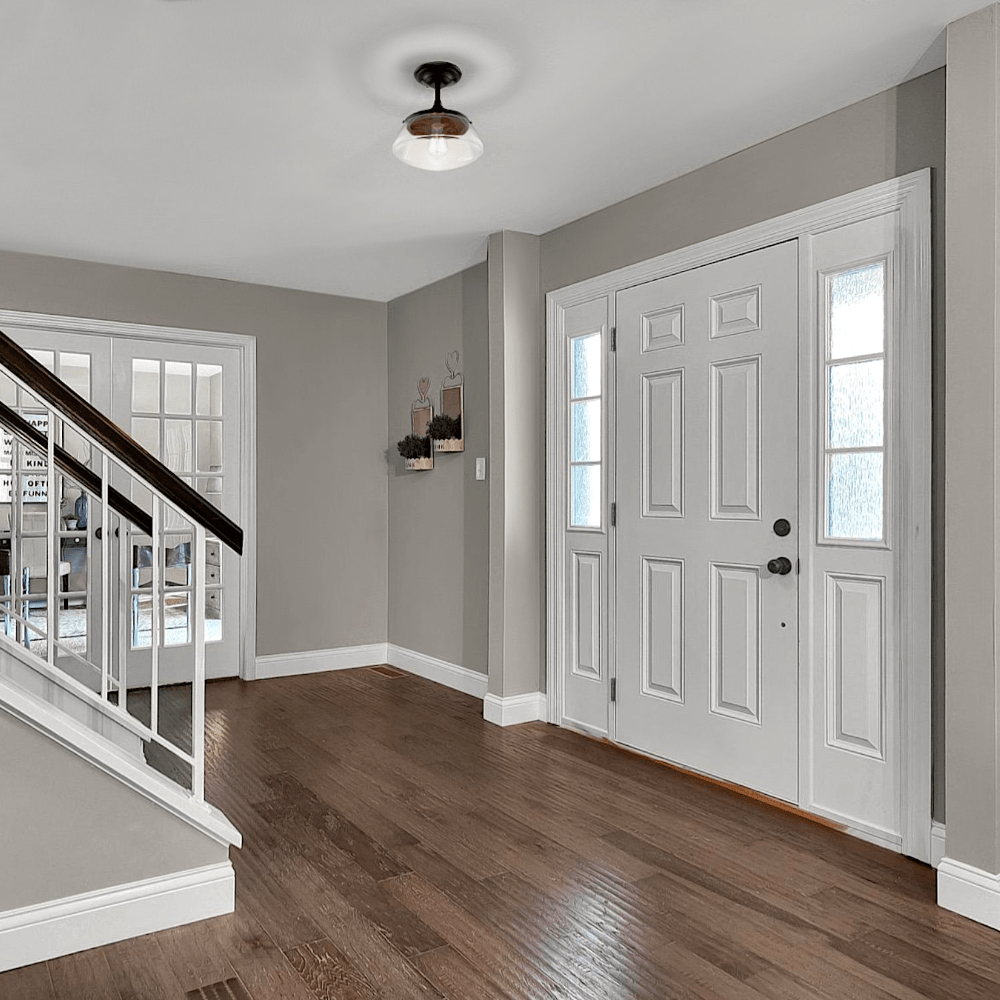
Neutral Tones for Versatility
Neutral tones like beige, taupe, or gray offer versatility and can complement a variety of wall colors. They create a subtle yet elegant finish.

Bold and Contrasting Choices for a Statement
For those seeking a bold look, consider contrasting trim colors. Dark trims against lighter walls can create a striking and contemporary effect.
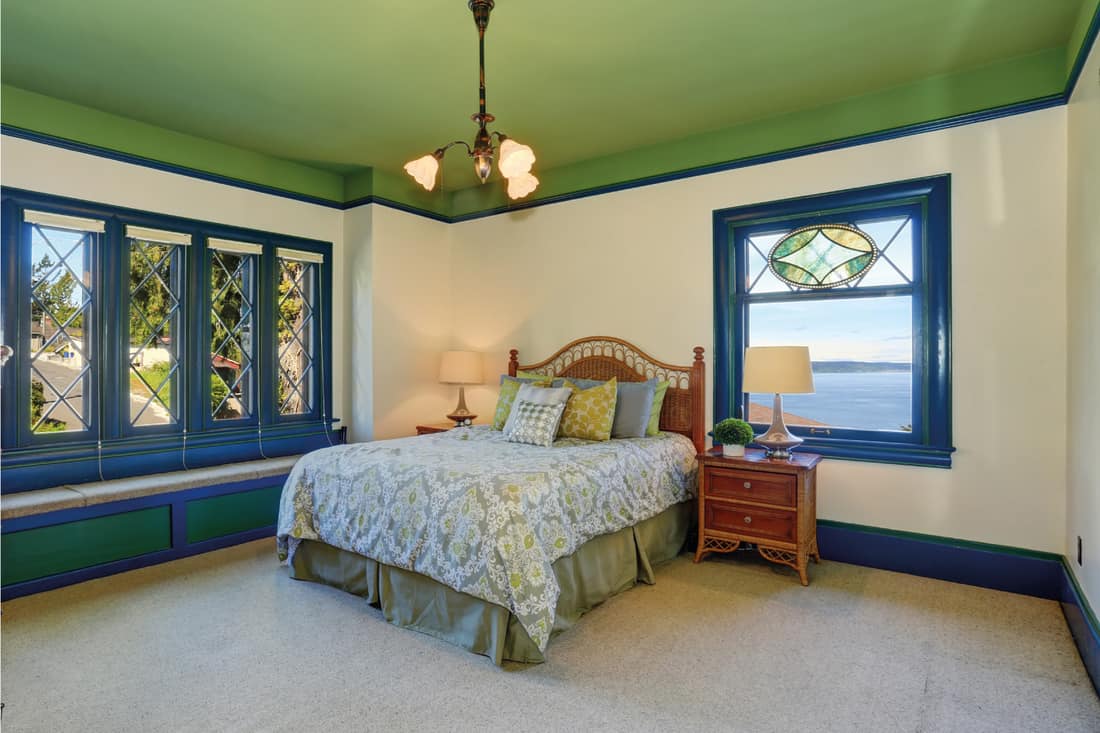
Harmony with Wall Colors
Complementary Color Choices
Choosing trim colors that complement the wall color enhances the overall aesthetic. Consider the color wheel and opt for shades that work harmoniously together.
Creating Visual Flow Between Walls and Trim
Ensure a smooth transition between wall and trim colors for visual flow. This cohesion contributes to a well-designed and balanced space.
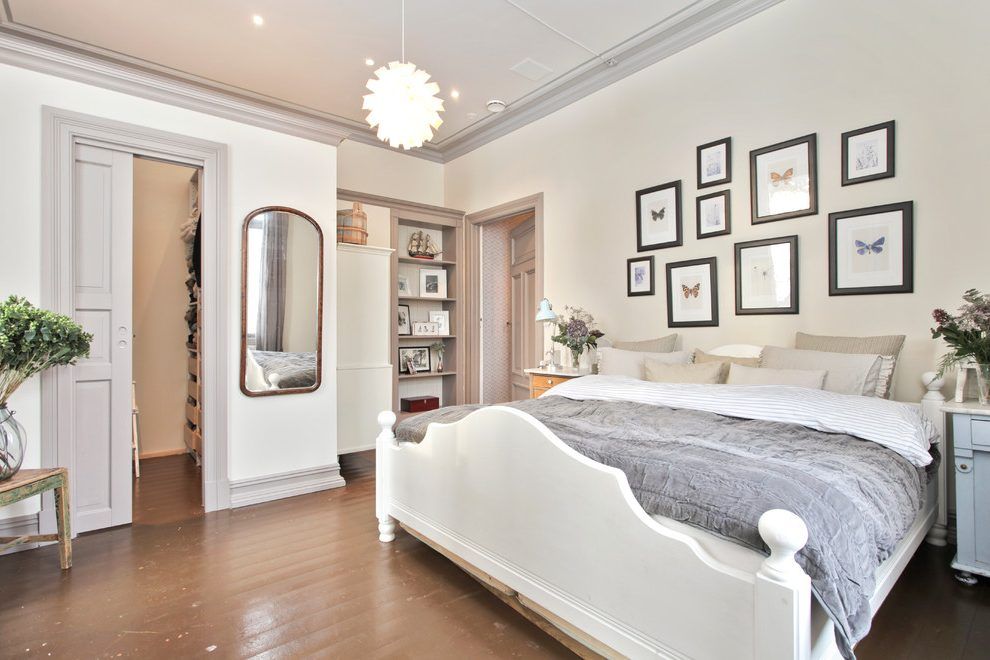
Consideration for Architectural Features
Emphasizing Architectural Details with Trim
Use trim colors to highlight architectural features such as crown molding or wainscoting. This adds character and depth to the overall design.
Balancing Trim with Moldings and Baseboards
Maintain balance by coordinating trim colors with other architectural elements like moldings and baseboards. Consistency in color tones creates a polished finish.

Practical Considerations
Maintenance and Cleaning Aspects
Consider the practicality of your trim color choice. Lighter colors may show dirt more easily, while darker tones can hide scuffs and marks.
Durability of Different Trim Color Choices
Certain colors and finishes may wear better over time. Factor in the durability of the paint or finish to ensure longevity.

Personal Style and Preferences
Expressing Individuality Through Trim Colors
Your home is a reflection of your personality. Don’t be afraid to express your style through trim colors that resonate with you.
Trends vs. Timeless Choices
While trends can be inspiring, prioritize timeless choices to ensure your interior remains stylish for years to come.

DIY vs. Professional Assistance
Pros and Cons of Painting Trim Yourself
DIY painting allows for a personal touch, but it requires time and skill. Consider the pros and cons before embarking on a DIY trim project.
Hiring Professionals for a Polished Finish
Professional painters bring expertise and precision to the job. If you want a flawless finish, investing in professional assistance may be worthwhile.

Trim Colors in Different Rooms
Specific Considerations for Living Rooms
Choosing trim colors for living rooms is a crucial aspect of interior design that can significantly impact the overall atmosphere of the space. Here are two tips to help you pick the perfect trim colors for your living room:
- Consider Natural Light:
- Take note of the amount and direction of natural light in your living room. If it receives ample sunlight, lighter trim colors can enhance the brightness and create an airy feel. Classic white or light neutral tones work well in well-lit living rooms. On the other hand, if your living room has limited natural light, consider slightly warmer and mid-tone trim colors to add coziness without making the space feel too dark.
- Coordinate with Wall Colors and Furnishings:
- Ensure harmony between your trim colors, wall colors, and furnishings. If your living room features bold or vibrant wall colors, opting for neutral or classic white trims can provide a balanced and sophisticated look. Conversely, if your walls are a more neutral shade, you have the flexibility to introduce bolder trim colors for a touch of drama. Consider the color palette of your furniture and decor when making trim color decisions to create a cohesive and visually appealing living space.

Bedroom Trim color
Choosing trim colors for a bedroom involves creating a serene and comfortable atmosphere that aligns with your personal style. Here are tips to help you pick the perfect trim colors for your bedroom:
- Consider the Bedroom’s Size:
- Take into account the size of your bedroom when choosing trim colors. In smaller bedrooms, lighter trim colors, such as soft whites or light neutrals, can create an illusion of more space and contribute to an airy feel. For larger bedrooms, you have the flexibility to experiment with both lighter and darker trim colors. Consider the overall proportions of the room to strike the right balance and enhance the bedroom’s aesthetic appeal.
- Create a Relaxing Color Palette:
- Aim for a color palette that promotes relaxation and tranquility in the bedroom. Soft and muted trim colors, like calming pastels or gentle neutrals, can contribute to a soothing environment conducive to sleep. Consider coordinating the trim colors with the bedroom’s wall color to create a cohesive look. Earthy tones, such as warm grays or soft greens, can be particularly effective in creating a serene atmosphere. Keep in mind that the goal is to establish a comfortable and restful ambiance in your bedroom.

Kitchen Trim color
Selecting trim colors for the kitchen involves considerations for both aesthetics and practicality. Here are tips to help you pick the perfect trim colors for your kitchen:
- Coordinate with Cabinet Colors:
- Take into account the color of your kitchen cabinets when choosing trim colors. If your cabinets have a dominant color, consider selecting a trim color that complements or contrasts with them. For a cohesive look, choose trim colors that work harmoniously with the overall color scheme of the kitchen. This coordination helps tie together the various elements in the kitchen, creating a visually appealing and well-designed space.
- Prioritize Easy Maintenance:
- Kitchens are prone to splashes, stains, and high levels of activity. When choosing trim colors, prioritize finishes that are easy to clean and maintain. Semi-gloss or high-gloss paint finishes are often a practical choice for kitchen trims as they can be wiped clean with ease. Consider neutral tones or classic whites for trim colors, as they not only provide a clean and fresh look but also make it simpler to spot and address any necessary touch-ups in a high-traffic area like the kitchen.
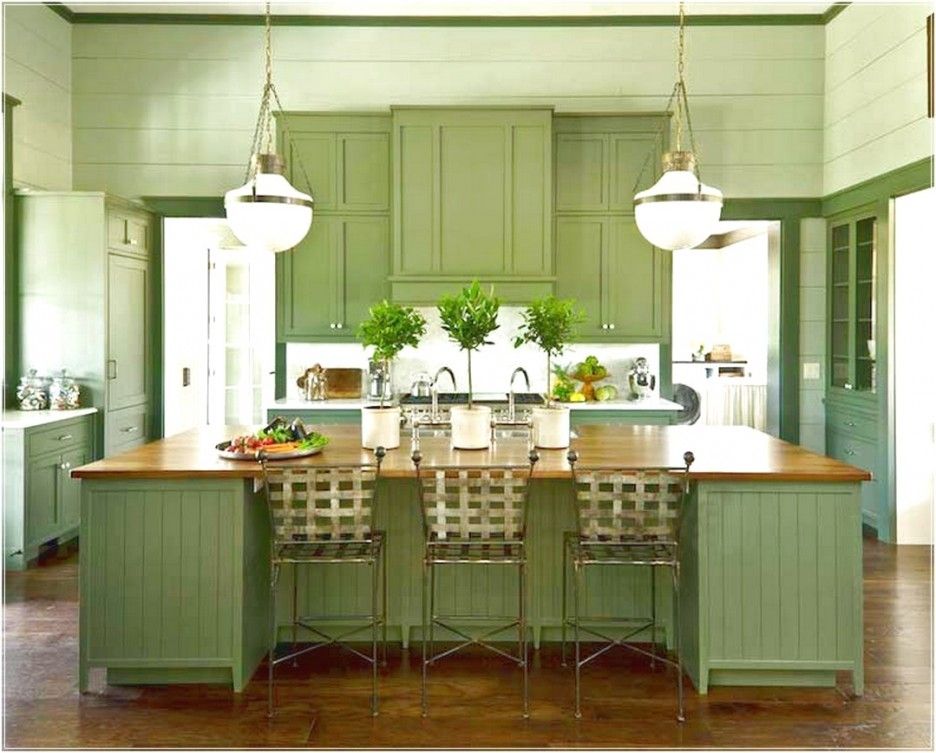
Bthroom Trim Color
Selecting trim colors for a bathroom involves considerations for both style and practicality. Here are two tips to help you choose the perfect trim colors for your bathroom:
- Consider the Bathroom’s Size and Light:
- The size and lighting conditions of your bathroom play a crucial role in trim color selection. In smaller bathrooms, lighter trim colors, such as crisp whites or light neutrals, can make the space feel more open and airy. If your bathroom receives plenty of natural light, you have more flexibility with color choices. For bathrooms with limited natural light, consider using lighter trim colors to prevent the space from feeling too confined.
- Factor in Moisture Resistance:
- Bathrooms are exposed to high levels of moisture, so it’s essential to choose trim colors and finishes that are resistant to humidity and can withstand occasional splashes. Opt for moisture-resistant paint and finishes to prevent damage over time. Classic white, neutral tones, or even light blues and greens are popular choices for bathroom trim colors, providing a clean and refreshing appearance while standing up to the challenges of a bathroom environment.

Budget-Friendly Options
Cost-Effective Trim Color Alternatives
Achieve a high-end look on a budget by exploring cost-effective trim color options. Affordable doesn’t mean sacrificing style.
Tips for Getting a High-End Look on a Budget
Strategic choices, such as focusing on high-impact areas, can give your interior a luxurious feel without breaking the bank.
Testing and Sampling
Importance of Testing Trim Colors Before Commitment
Never underestimate the power of testing. Paint small sample areas to see how the color interacts with the lighting and other elements in the room.
Using Sample Boards to Visualize Choices
Create sample boards with your chosen trim colors and place them against the walls to visualize the final result. This step helps in making informed decisions.

Avoiding Common Mistakes
Common Pitfalls in Choosing Trim Colors
Learn from common mistakes, such as neglecting to test colors or ignoring the impact of lighting. Awareness can prevent potential design mishaps.
Learning from Others’ Experiences
Read about others’ experiences and learn from their successes and mistakes. Online forums and design communities can offer valuable insights.
Staying Updated with Trends
Keeping Abreast of Current Interior Design Trends
Stay informed about current trends but incorporate them wisely. Trends come and go, so choose trim colors that align with your personal style.
Incorporating Trendy Trim Colors Without Dating Your Space
Blend trendy trim colors with timeless elements to ensure your interior remains relevant and doesn’t feel outdated quickly.
Finalizing Your Decision
Summarize the key considerations and encourage readers to trust their instincts when choosing trim colors. A well-thought-out decision contributes to a harmonious and visually pleasing interior.

Choosing trim colors for your interior is a creative and personal process. By considering factors like room size, lighting, and personal style, you can make informed decisions that enhance the overall aesthetics of your home. Whether you opt for classic white trims or bold contrasting choices, the key is to create a cohesive and visually appealing space that reflects your individuality.
FAQs
Can I paint my trim a different color than my walls?
Absolutely! Choosing a trim color that contrasts or complements your wall color can add depth and visual interest to a room.
How do I test trim colors before committing?
Paint small sample areas on the trim and observe them in various lighting conditions to ensure the color looks right in your space.
What’s the best trim color for small rooms?
Lighter trim colors, such as classic white or neutral tones, can create an illusion of space in smaller rooms.
Do I need to hire a professional for painting trim?
While DIY is an option, hiring professionals ensures a polished finish, especially if you’re tackling intricate details or lack painting experience.
How often should I update my trim colors to stay on-trend?
Focus on timeless choices for larger elements and incorporate trendy colors in smaller, easily changeable decor items to stay current without frequent updates.
